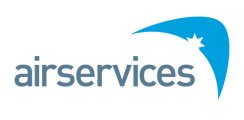System delivers $18.2 million fuel cost savings for airlines

Airservices is delivering annual fuel cost savings to airlines estimated at $18.2 million through a system introduced to reduce airborne delays, help save fuel and associated emissions, enhance safety and reduce air traffic congestion.
The system, known as Metron Harmony, has resulted in an annual saving of 8700 hours in airborne delay time or an average of 1.1 minute per flight arriving at Melbourne, Sydney, Perth and Brisbane airports in 2014, according to an independent study by PricewaterhouseCoopers Australia.
With a 60 per cent increase in Australia’s air traffic expected by 2020, the report projects these savings to increase to 14 300 hours, or 1.3 minutes per flight, and $37.3 million in annual fuel savings by 2022.
Using weather and scheduling information, the Metron Harmony system provides advice on the maximum arrival rates at airports and allows delays to be managed on the ground, prior to departure. This is preferable to aircraft being required to fly in holding patterns in the air, because it reduces fuel burn and environmental impact.
Metron Harmony also improves safety through minimising airborne holding and air traffic congestion, thereby reducing the workload on air traffic controllers.
Airservices Executive General Manager Air Traffic Control, Greg Hood, thanked the aviation industry for its support with the introduction of the Metron Harmony system and for the feedback during the study.
“Airservices is pleased with the benefits being delivered by the new Metron Harmony system and we also acknowledge the importance of airport scheduling systems and cross industry collaboration in driving efficiency at an airport level,” Mr Hood said. “We look forward to continuing to work together to drive further efficiencies where it’s possible and without impacting safety.”
The introduction of Metron Harmony is one of a number of measures introduced by Airservices in recent years to drive fuel efficiencies, reduce emissions and enhance safety for airlines and operators. Other initiatives include greater use of flexible air traffic routes (flextracks) and User Preferred Routes (UPRs) which allow airlines to maximise their flight routes based on the prevailing weather and forecast winds.
Metron Harmony was introduced into Airservices operations at Sydney and Melbourne airports in March 2012, at Brisbane Airport in late 2012 and at Perth Airport in March 2014.
Airservices commissioned PricewaterhouseCoopers Australia to undertake a study into the implementation of the Metron Harmony Traffic Flow system in 2014.


.png)

.jpg)




Comments
There are no comments yet for this item
Join the discussion